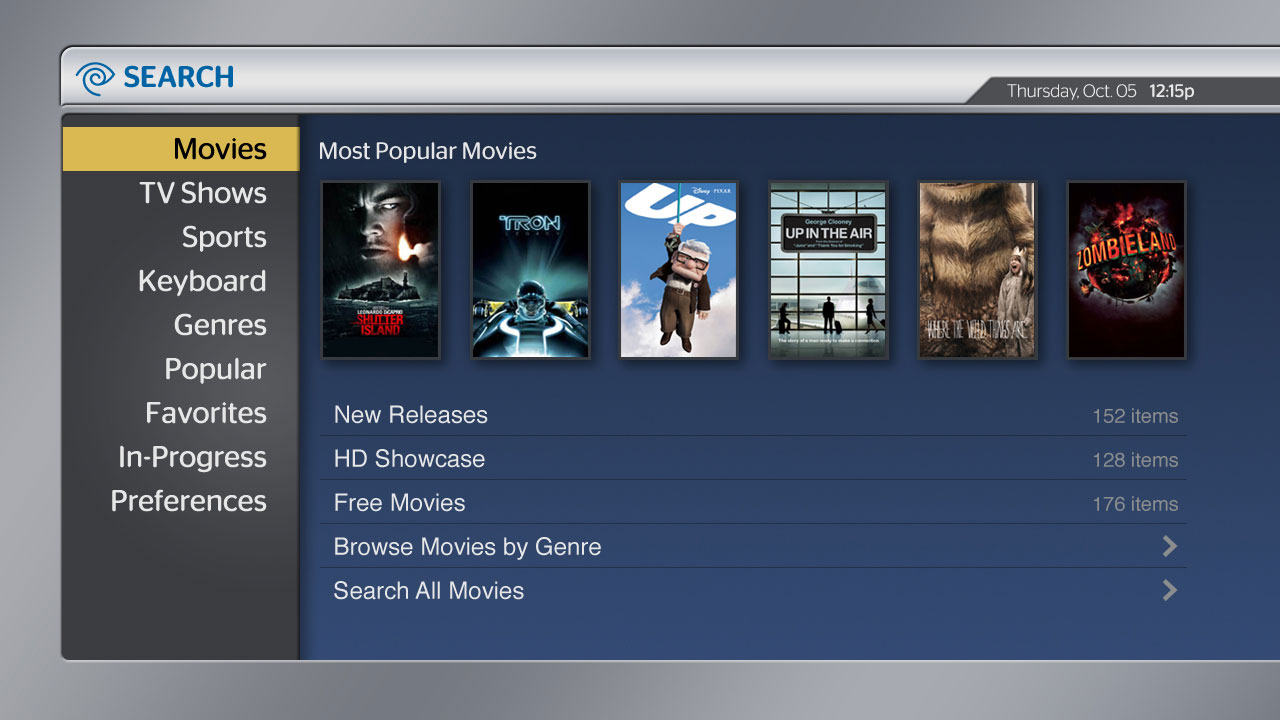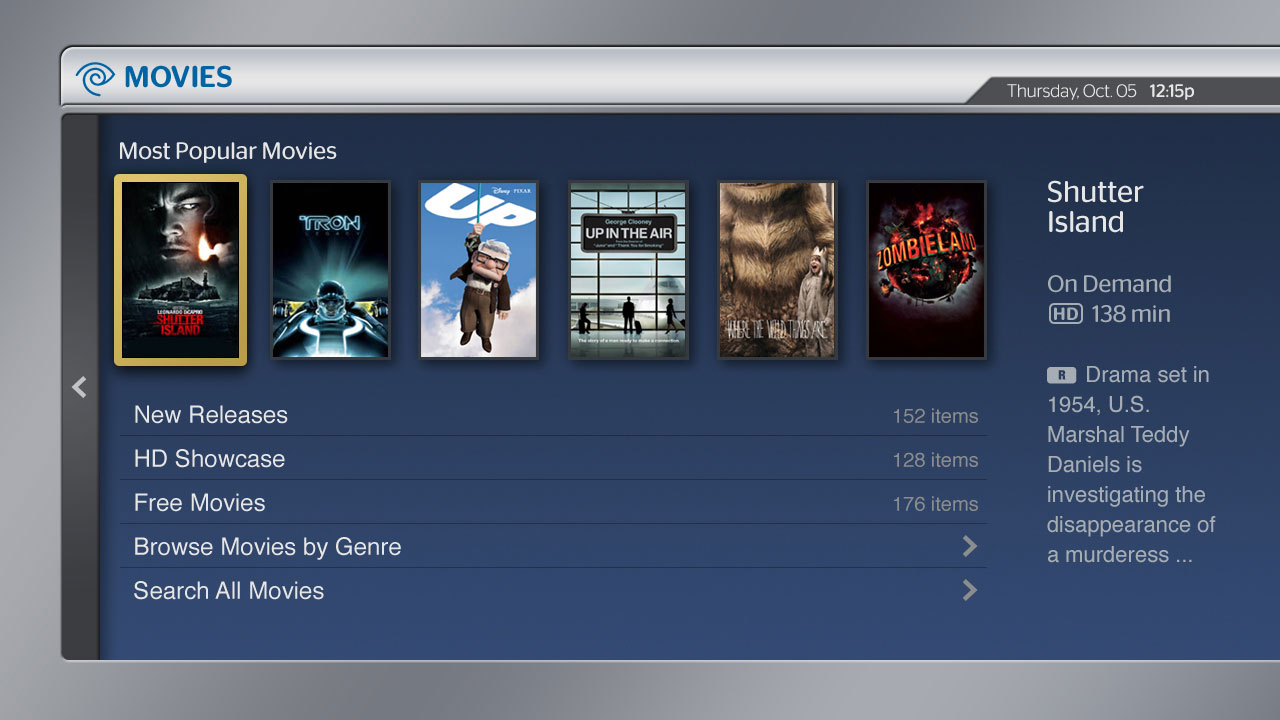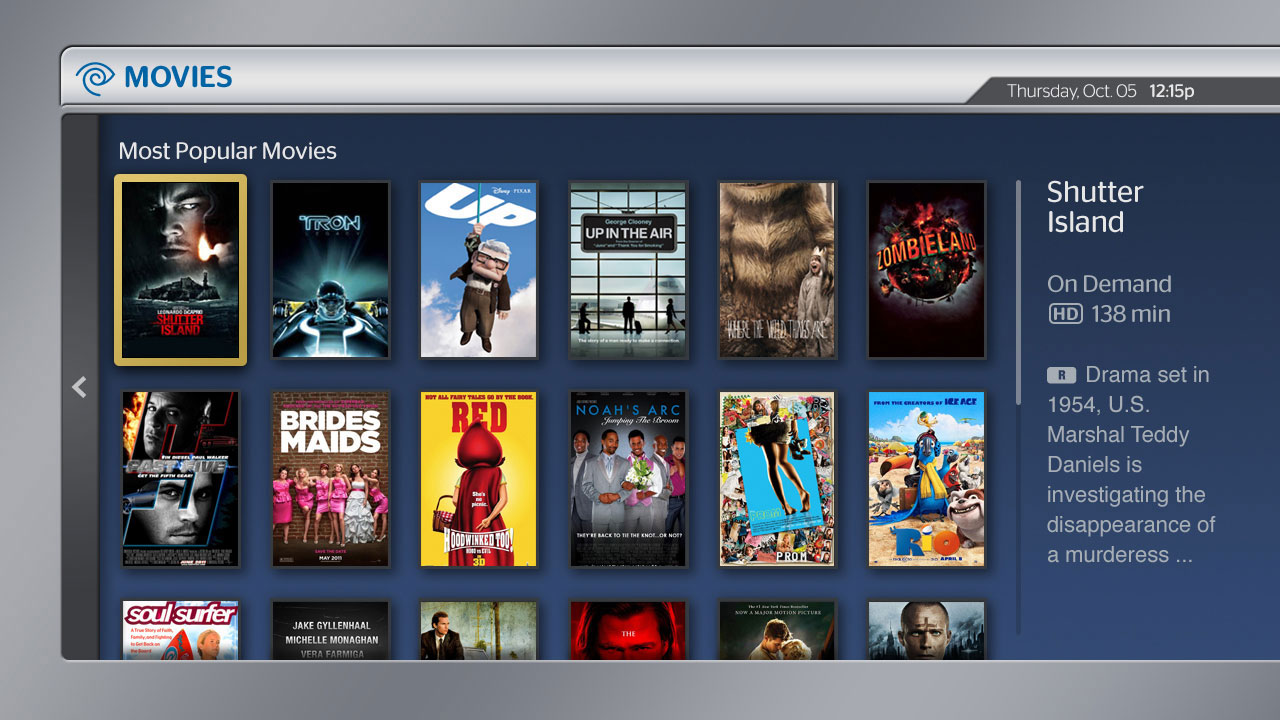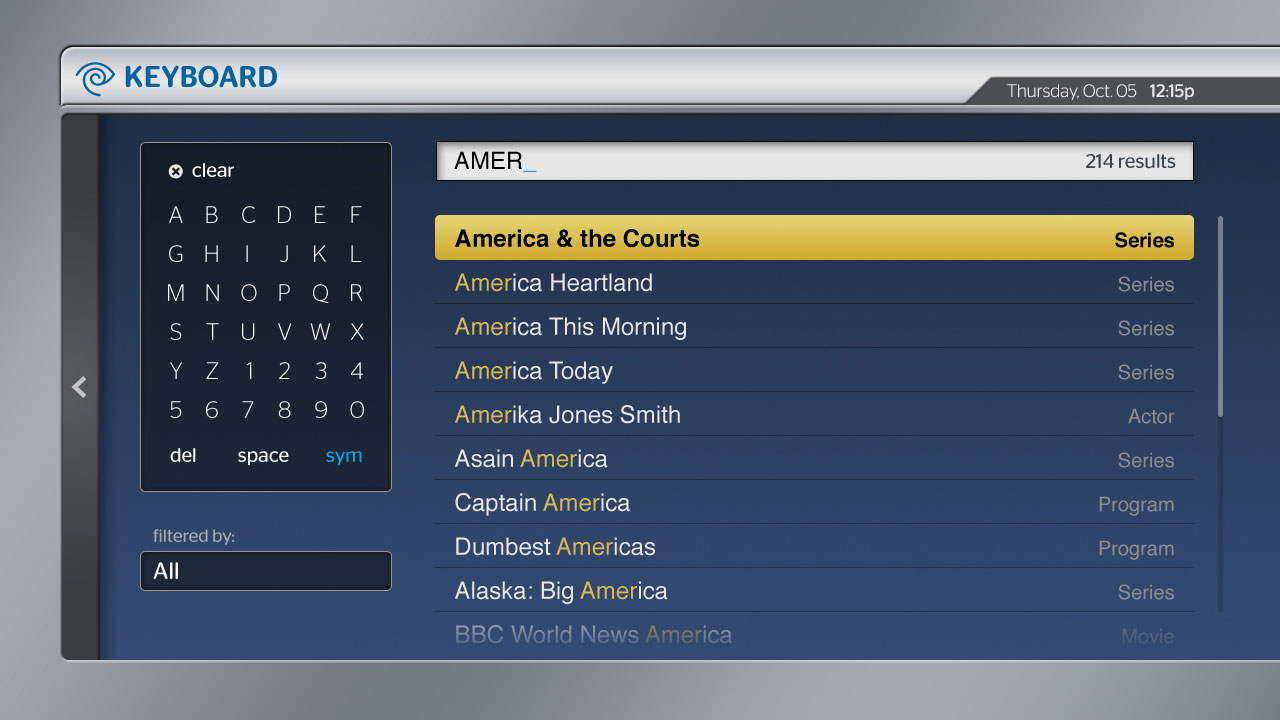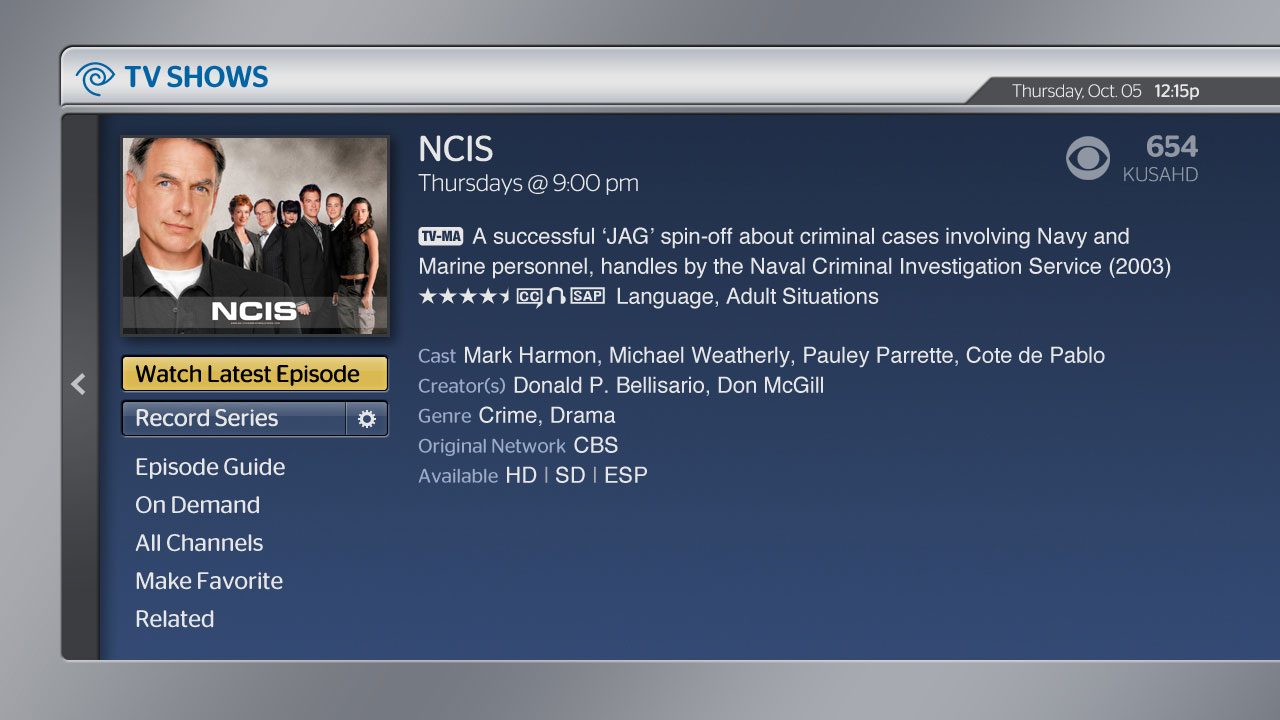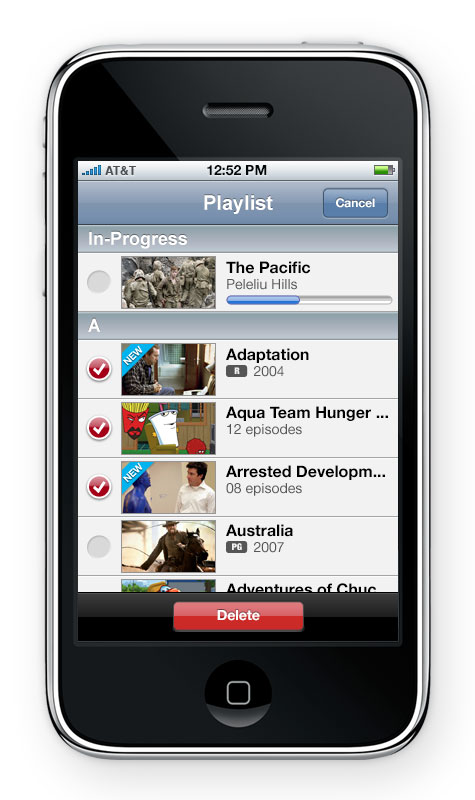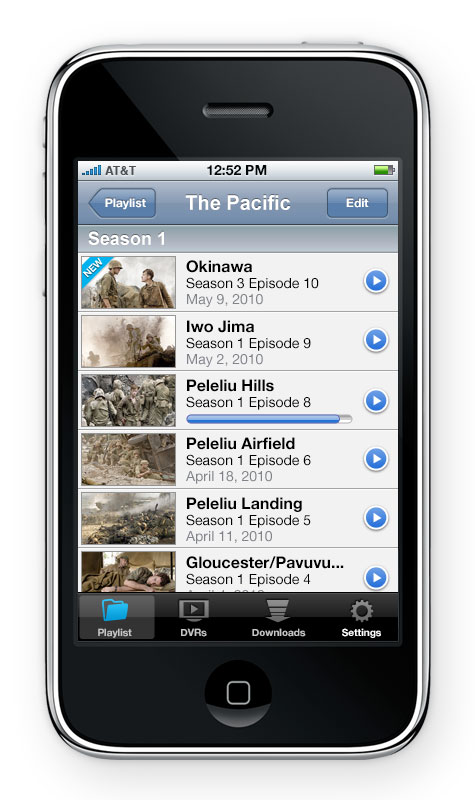CTG Product Support
As the Creative Director for TWC’s Converged Technologies Group, I’m not only responsible for the user experience and user interface of our video products, I’m also responsible for all the field documentation necessary to deploy and maintain our video products. To serve our internal customers we created the CTG Product Support website. Here you will find all the needed release documents, tech bulletins, and the catalog of service logos that we create and distribute. It also serves as a hub for feedback and service requests. After a recent survey of our most frequent customers, and a corporate-wide re-branding, we redesigned and relaunched the site.
TWCTV Gingerbread
Soon after the release of TWCTV for iOS, Time Warner Cable needed to support their Android customers with similar functionality. Using the iOS application as a benchmark, we quickly designed and developed this application for Android’s Gingerbread release. Below is the concept we came up with for the application based on the scope set by Time Warner Cable and available in Android Gingerbread. What was released incorporated some minor changes and feature improvements.
TWC Commercial
Other than residential, Time Warner Cable also offers its video subscription in the commercial and university markets. This was a quick project that updated the hotel UI to conform to new branding that was being applied across the entire video product. The scope was smaller than the full navigator, including only an EPG, On Demand menu, and an info banner. The Welcome screen tied it all together and allowed for navigation between the features.
Flickr
The inclusion of personal content has always been a stated goal of Time Warner Cable. As MSOs expand out from cable video subscriptions, to voice and data, photos seemed like an obvious next step. After attempting for many years to provide the storage and access within the home as part of the bundled package, it finally became clear that the users personal content had already made the transition to the cloud.
The main use case centered around viewing images and slide shows of personal photos, or creating a generic slide show of Flickr’s interesting images similar to a screen saver. The end result was a small application that allowed access to the users photostream, the sets they had created online, their favorite images, or the photostream of their contacts.
Next Generation Video Navigator
One of my first tasks as the Director of User Experience and User Interface for Time Warner Cables Converged Technologies Group was to create the next generation video navigator to be built for their leased devices. The requirements were that it had to continue to use some of the traditional metaphors that customers were accustomed to like a channel guide, an on-screen keyboard for search, information banners, and an On Demand channel. It also needed to be navigated with the remote control that was currently in the field.
The premise behind this design was that the video was truly the main feature of the experience, and that the content should speak for itself. We really wanted to avoid UI for UI sake. So we started with the video player, and the product pages; the actual presentation of the content. Once we had that solid, we moved outwards into what the user needed to discover that content.
Microsoft Mediaroom
Microsoft offers a turnkey IP video solution called Mediaroom. In 2009 we developed a Mediaroom implementation for a trial in our LA market. My role was to direct a team of TWC designers and Microsoft engineers to develop the bulk of our video services on the Mediaroom platform. Our intent was not only to rebrand the product, but to customize it along the way. We implemented the standard suite of video features like EPGs, channel banners, DVR, as well as a collection of genre based mosaic channels and our Start Over® service.
Advanced Search
“IT’S CONVENIENT, IT’S SMART, YOU KNOW… IT’S ORGANIZED. IT SAVES YOU A LOT OF TIME FROM HAVING TO GO THROUGH AND FIGURE THINGS OUT.”
- Ray, Charlotte, N.C.
In late 2008 we received some very pointed and articulate responses regarding the current search capabilities available to our customers. When I had transitioned to the position of Creative Principal, I inherited the suite of applications that comprised the video experience. These applications had been designed by the video product group, or gleaned from competitive and previous products. The feedback we received was that, among other things, the search application wasn’t cutting it.
So we set about recreating the search application on the set top. The project was called Prelude Advanced Search. Prelude was the first ever BCE (Branded Customer Experience) Certified project, and was designed from the customer back. We started with the most vocal detractors online, moved as quickly as possible into prototypes that we iterated on with the customers, fed back on the data services layer, and entered production. During production we continued to interact with the customer base, refining again and again. The scope of the project included editorial content mixed with cloud based search across linear, on demand, and DVR based content. At the time it was conceived it was one of the largest search projects in the industry.
The end result is Time Warner Cables cloud-based Advanced Search, which will soon be available across the entire footprint.
Motorola Mover
Early in 2010, Motorola came to us with a product they called the Mover. The concept was simple. Transcode the users DVR content to MPEG-4, store it on solid state media, and transport it to their devices wirelessly. Physically it was a separate unit, but the plan was that it would be integrated into the leased hardware at some point. The concept was good, and you can see its current implementation in DirecTV’s Nomad, and TiVo to Go.
My team was tasked with designing the applications for iOS and Android (which at the time was basically the iPhone and Droid). The scope for the application required that it see all content available on the home DVRs, allow the user to specifically transfer one or many assets, playback those assets, and then store locally any in-progress data. Because the point of the app was to identify and consume content on your remote device, we decided to create a straightforward productivity type application. The simple list views available from the SDKs allowed us to quickly get content to the device and present it to the user, however the organization of the content proved to be trickier. We didn’t want to fall back on the old standard sort order, ‘by date’. So we worked with the developers to collapse the content into the appropriate series folders by inspecting all the episodes, and moved individual assets with an in-progress point to the top. The last part was to implement our version of parental controls on a device by device basis. Via a settings tab, a parent can set the level of content available to the device, and then PIN protect the configuration.
Home Media Center
Time Warner Cable wanted to introduce a new hardware product as part of their data package. Part cable modem, part router, and part home media streamer. This new all-in-one device needed both an application to upload and manage a users content, but a 10 ft application that would reside on the cable box, and allow the user to consume their media. This was the Home Media Center application.
Under the direction of Time Warner Cable’s VP of ITV Product Management, Patrick Donoghue, and partnering with a wonderful agency Schematic, now part of Possible Worldwide, we developed the Home Media Center application for Time Warner Cable’s video subscription.
The application allowed the user to browse any content available from DNLA enabled cable router. Content included photos, videos, music, and a basic folder structure. The user could navigate any of these content areas, or they could search for content by title. The Home Media Center would playback a number of video formats, photo slide shows, as well as music albums or playlists.
World Trade Center
“Z-Axis provided forensics, animation, and trial visuals in precedent-setting World Trade Center insurance trial."
SUMMARY
Silverstein Properties had signed a lease on the World Trade Center complex only six weeks prior to the buildings collapse as a result of the terrorist attacks on September 11th. Twenty-four separate insurance companies combined to provide $3.5 billion in property insurance per occurrence. Silverstein Properties believed that the attacks were two separate occurrences and they were entitled to approximately $7 billion of coverage. Z-Axis was part of the Silverstein forensic team along with engineers from Weidlinger Associates, Hughes Associates, and LZA Thorton/Tomasetti.
This team of experts was compiled to analyze what was essentially one of the biggest crime scenes in history. Z-Axis was asked to triangulate the speed and angle of the impacts by analyzing video evidence of the event. Based on these calculations, the team created simulations, animations, interactive presentations, and other supporting evidence depicting the impact and resulting collapse of the towers.
One such exhibit created by Z-Axis was a scientifically accurate 3-dimensional animation of the impacts and subsequent collapse of each tower. Models of the airplanes, towers, and surrounding structures were created using data output from Weidlinger’s FLEX and SAP 2000 simulators. The impact models depicted over 800,000 elements in every frame, while the collapse sequences contained over 5 million elements per frame. The computer-generated models included details of all the elements of construction, including the towers’ cores, exterior tubes, floors, hat truss systems and fireproofing. The exhibits transformed the experts’ raw data into illustrations of the strength of every column and beam in the towers, both before and after the airplane impacts and subsequent fires. The modeling and animation were so accurate that when overlaid on actual videos taken on 9/11, the motion was virtually identical. In addition to the trial, the Z–Axis animations have been used outside of the courtroom in various documentaries on PBS and the Discovery Channel regarding 9/11, and have also been shared with the National Institute of Standards (NIST) and other industry groups to help them understand the events of 9/11 and plan future construction standards.
The total amount underwritten by the combined insurance companies was $3.5 billion. A previous trial had concluded that the portion of insurers that had underwritten $2.4 billion of the policy were liable for only one occurrence based on their version of the policy. A second trial presented by the team including Z-Axis, determined whether the attacks constituted two separate occurrences for the nine remaining insurance companies and remaining $1.1 billion in coverage. Z-Axis exhibits and animations were used to illustrate the events of 9/11 with a winning outcome for the expert team and its client at trial. The verdict determined that it was indeed two occurrences for insurance claims purposes, increasing the total amount of coverage provided by these nine companies from $1.1 billion to $2.2 billion.















































